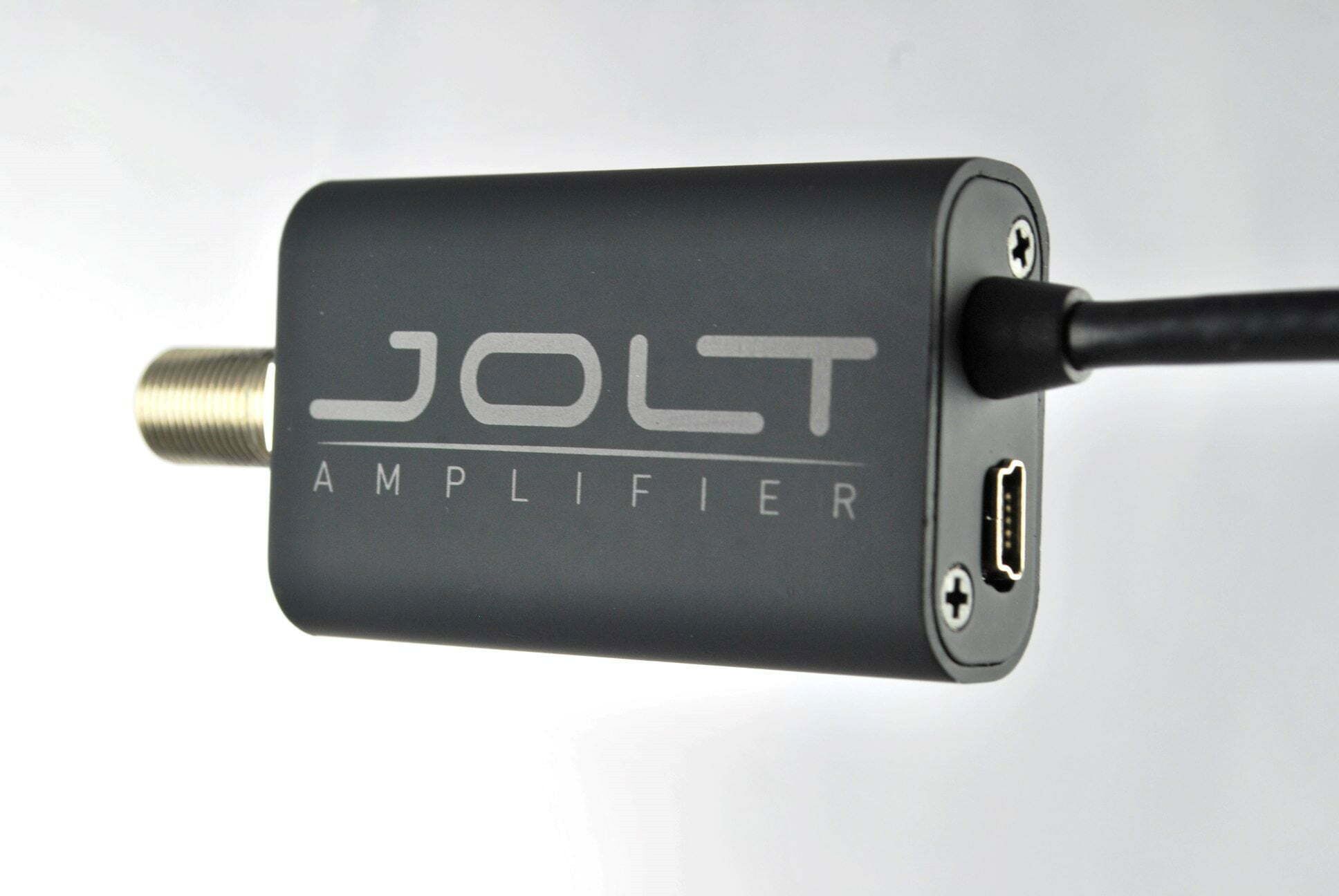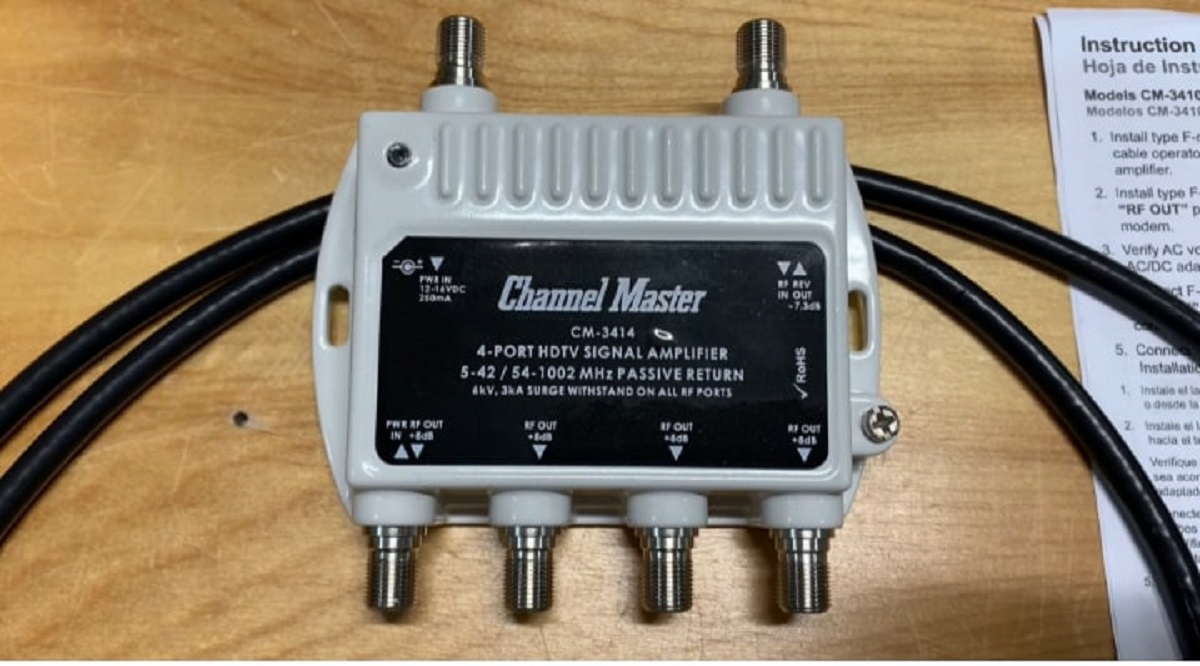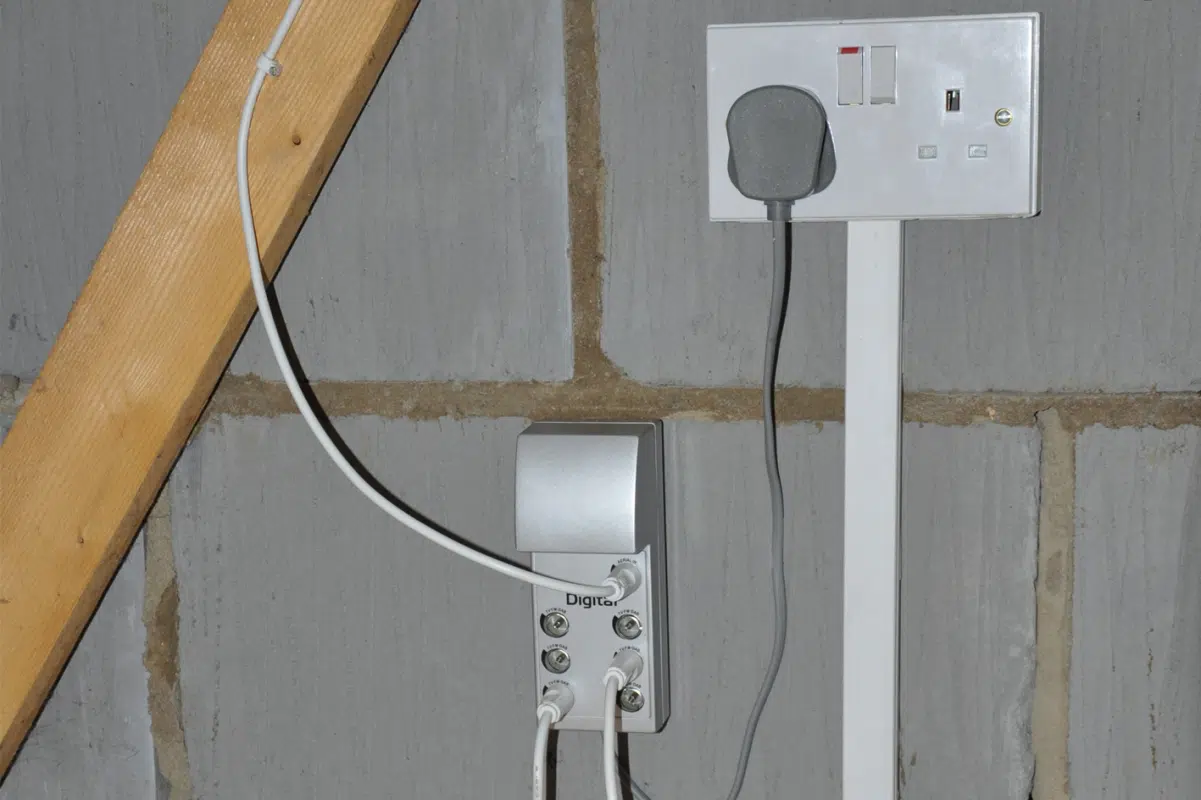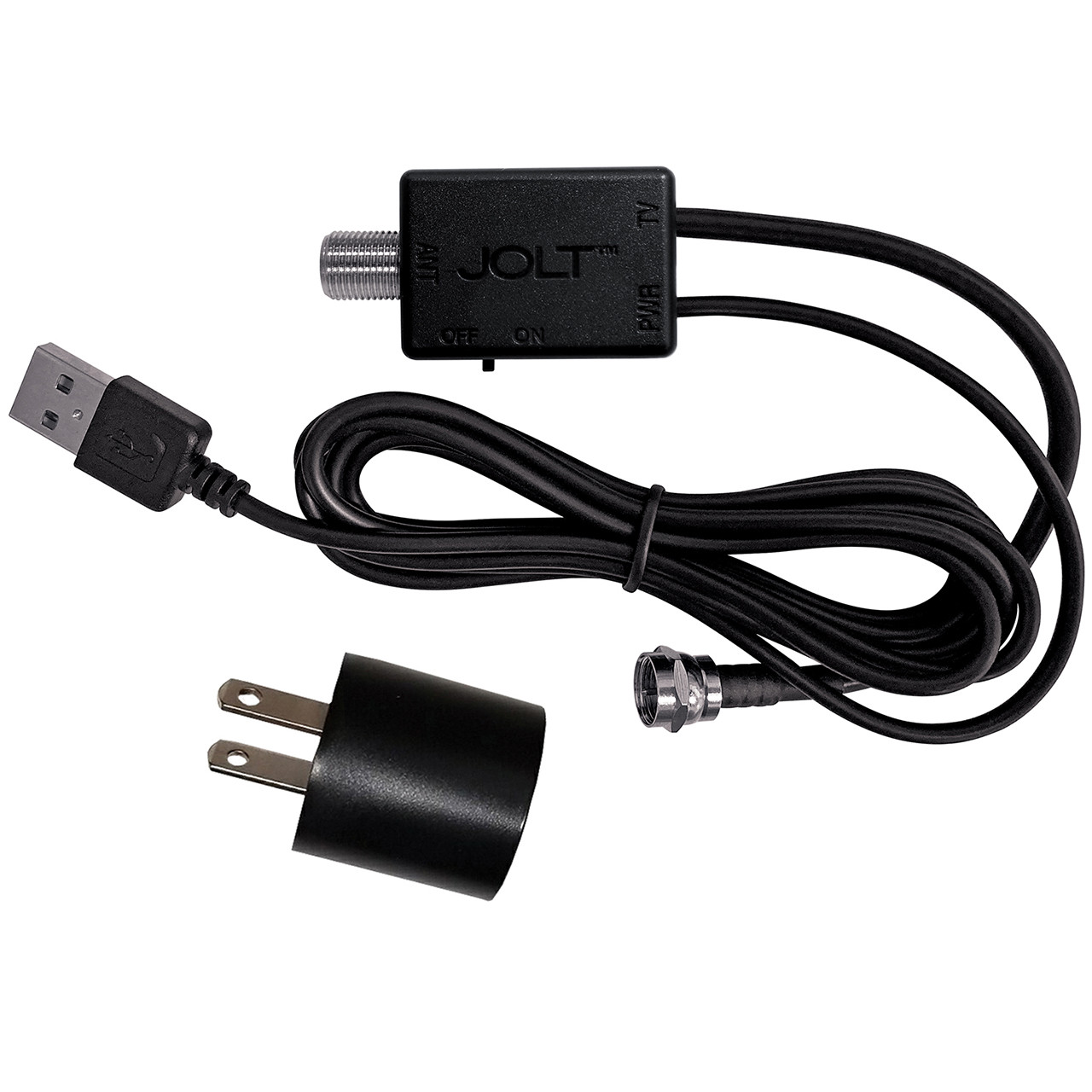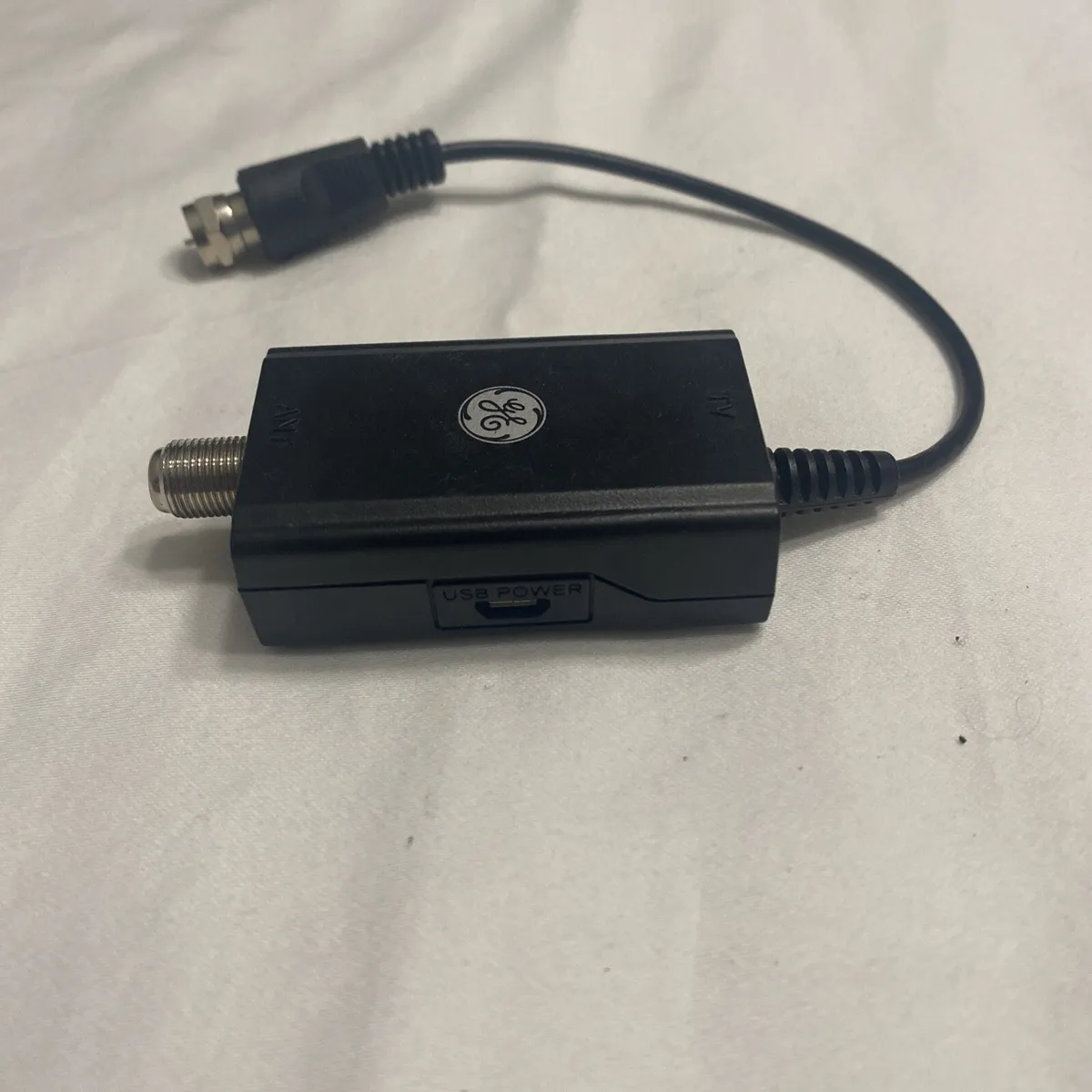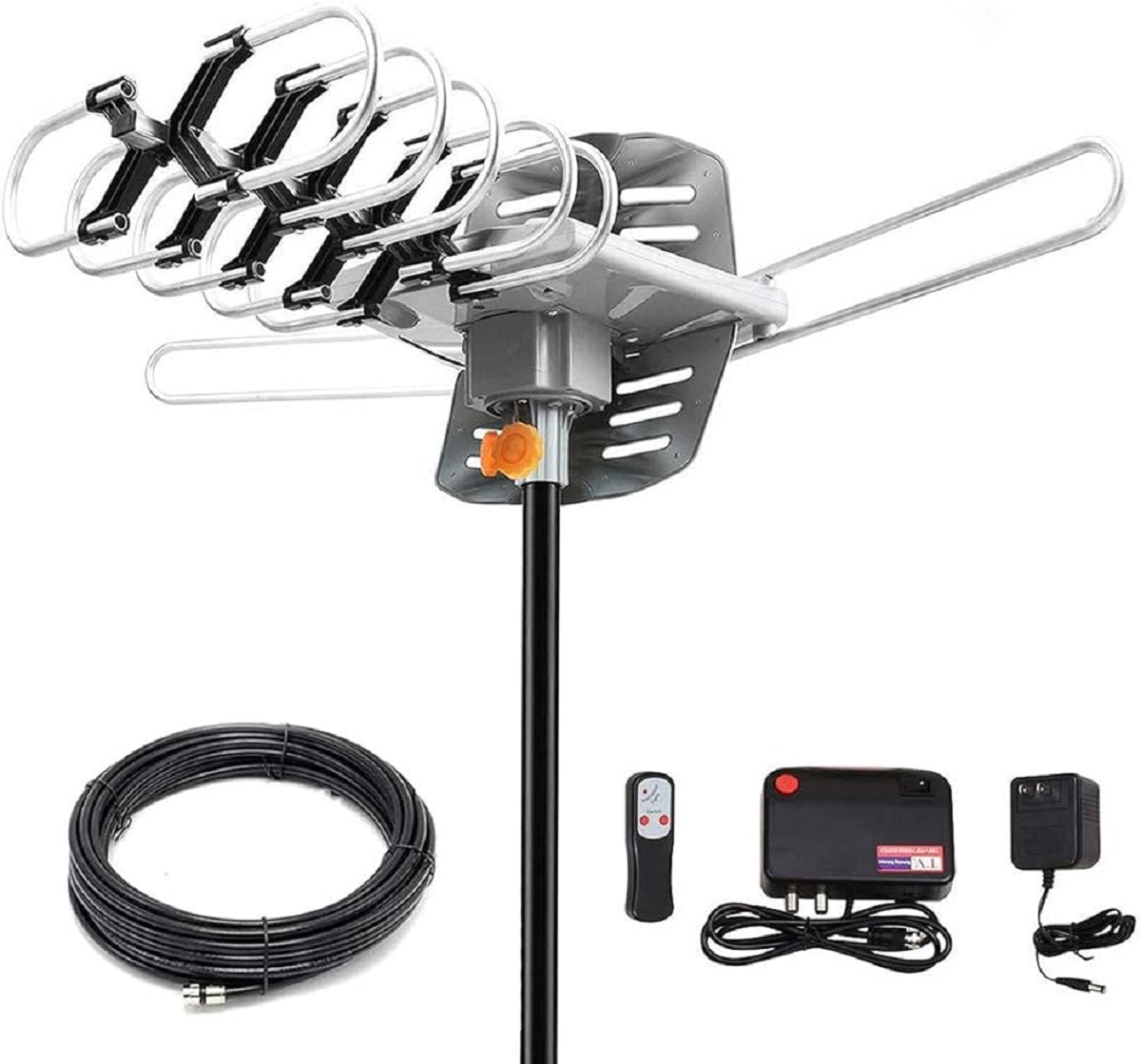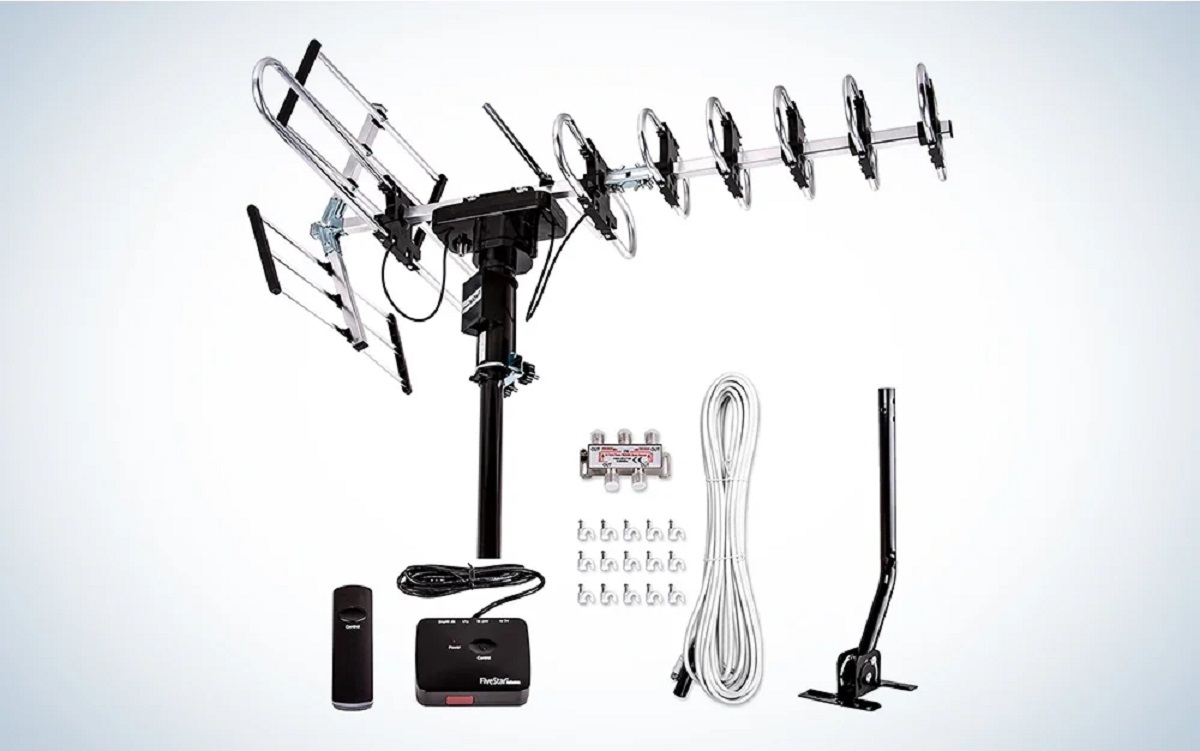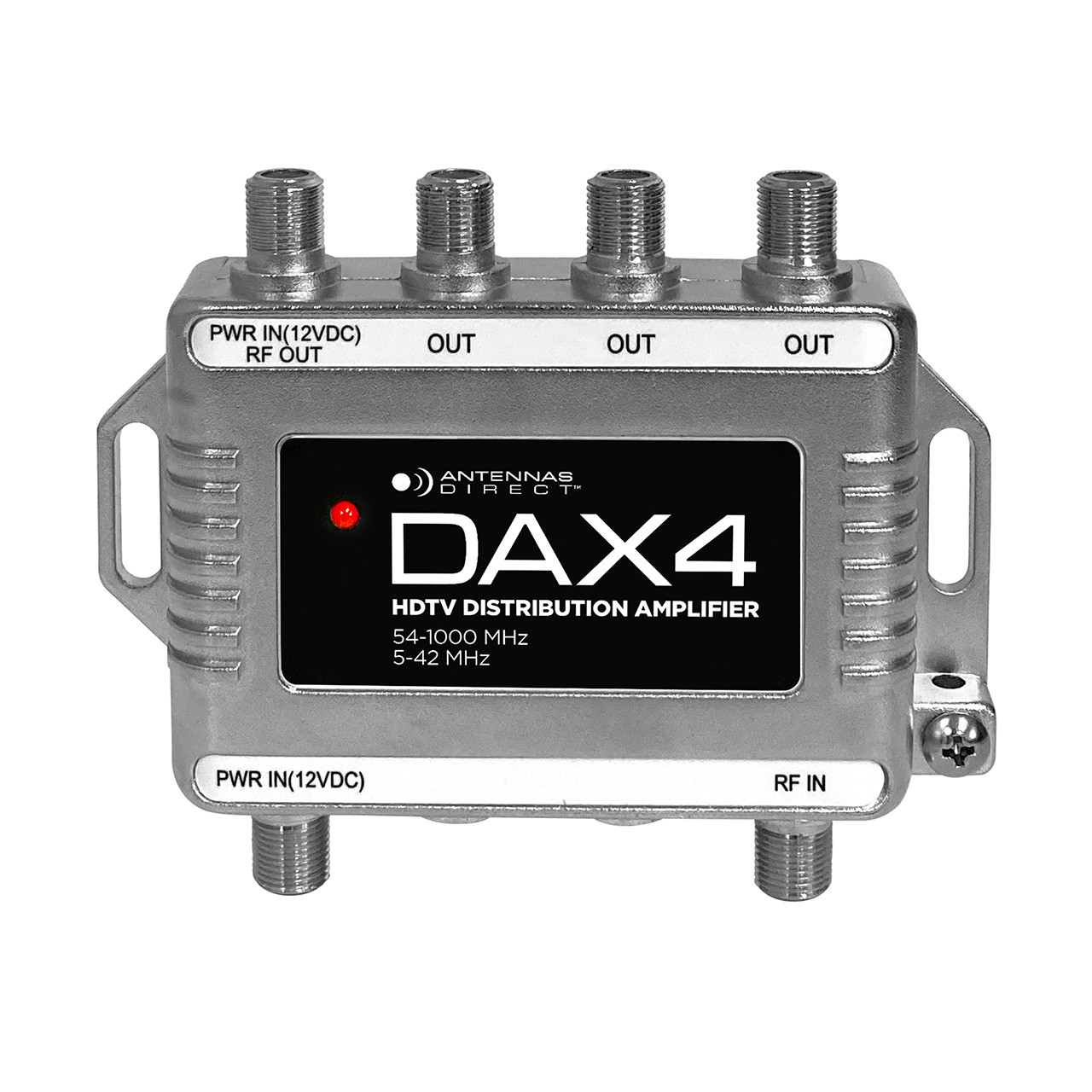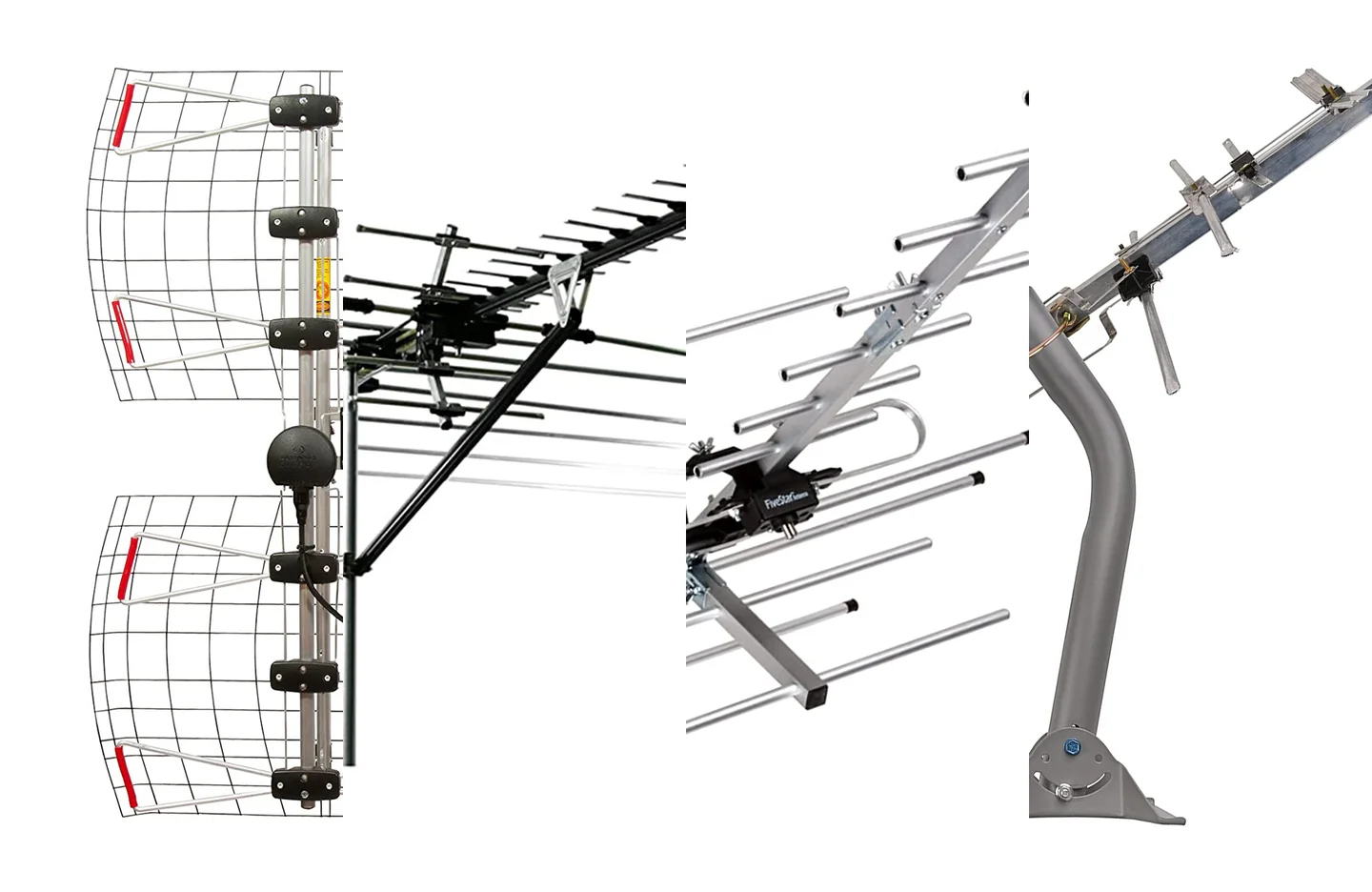Introduction
Welcome to our guide on TV antenna amplifiers! In today’s digital age, where streaming services and cable subscriptions dominate the entertainment landscape, it’s easy to forget the power and convenience of over-the-air broadcast television. With a TV antenna, you can access a wide range of free high-definition channels without any monthly fees.
However, if you live in an area with weak TV signals or have multiple TVs connected to a single antenna, you may encounter issues with signal strength and reception quality. This is where a TV antenna amplifier comes to the rescue.
A TV antenna amplifier, also known as a signal booster, is a device that enhances the strength and clarity of the TV signals received by your antenna. It amplifies the incoming signals, allowing you to overcome obstacles like distance from the broadcasting towers or interference from obstructions.
But how does a TV antenna amplifier actually work? Let’s delve into the details in the next section.
What is a TV antenna amplifier?
A TV antenna amplifier is a device designed to enhance the strength and quality of the TV signals received by your television antenna. It works by amplifying the weak signals captured by the antenna, enabling clearer reception and better picture quality.
Antenna amplifiers come in various forms, including in-line amplifiers, masthead amplifiers, and distribution amplifiers. In-line amplifiers are placed between the antenna and the TV, boosting the signal before it reaches the television. Masthead amplifiers, on the other hand, are installed near the antenna itself to amplify the signal right at the source. Distribution amplifiers are used when multiple TVs are connected to a single antenna, distributing the amplified signal to each TV.
These amplifiers are typically powered by an AC adapter or through the coaxial cable itself. They may have adjustable gain controls, allowing you to fine-tune the amplification according to your specific needs. It is important to note that while TV antenna amplifiers amplify the signal, they cannot create signals that are not available in your area. They simply improve the signals you can already receive.
Now that we understand what a TV antenna amplifier is, let’s explore how it actually works.
How does a TV antenna amplifier work?
A TV antenna amplifier works by taking the weak signals received by the antenna and boosting their strength before sending them to your television. It is important to understand the basic process through which an antenna amplifier operates.
When your TV antenna captures the broadcast signals, it may encounter various factors that weaken the signals, such as distance from the broadcasting towers, obstructions like buildings or trees, or interference from other electronic devices. These factors can result in a poor quality signal or even complete loss of certain channels.
The TV antenna amplifier is placed strategically in the signal path, either inline with the antenna cable or near the antenna itself. As the weak signals travel through the amplifier, the device amplifies the signals’ strength, compensating for any loss incurred during transmission. This boosted signal is then sent to your TV for improved reception.
Inside the antenna amplifier, there are electronic components, including transistors, capacitors, and amplification circuits. These components work together to increase the voltage and power of the original signal, ensuring that it reaches your television with greater clarity and strength.
It is important to note that while TV antenna amplifiers can improve the signal quality, improper installation or over-amplification can cause issues such as signal distortion or interference. Therefore, it is crucial to select the right amplifier for your specific needs and follow the manufacturer’s instructions for installation.
Now that we’ve explored how a TV antenna amplifier works, let’s move on to discuss the benefits of using one.
Benefits of using a TV antenna amplifier
Using a TV antenna amplifier offers several benefits that can greatly enhance your television viewing experience. Let’s take a closer look at some of the key advantages:
- Improved Signal Strength: The primary benefit of using a TV antenna amplifier is the improved signal strength. It boosts the weak signals received by your antenna, allowing for better reception and a more stable connection.
- Enhanced Picture Quality: By amplifying the signal, a TV antenna amplifier helps to reduce pixelation, ghosting, and other forms of signal distortion. This results in a clearer and sharper picture on your television.
- Extended Range: If you live far away from broadcast towers or in a location surrounded by obstacles, a TV antenna amplifier can help extend the range of your antenna. It compensates for signal loss and enables you to access channels that may have been previously unavailable.
- Signal Splitting: In scenarios where multiple TVs are connected to a single antenna, a distribution amplifier can be used to split and amplify the signal, ensuring that each television receives a strong and clear signal without any loss of quality.
- Overcoming Interference: Interference from nearby electronic devices, such as Wi-Fi routers or cell phones, can hinder TV reception. A TV antenna amplifier helps mitigate interference, allowing for smoother and uninterrupted viewing.
- Cost-effective Alternative: Using a TV antenna and amplifier combination is a cost-effective alternative to cable or satellite subscriptions. It allows you to access free over-the-air channels while maintaining high-quality reception.
Overall, a TV antenna amplifier offers significant advantages in terms of signal strength, picture quality, range extension, interference reduction, and cost-effectiveness. It is a valuable tool for optimizing your TV antenna setup and ensuring an enjoyable viewing experience.
Next, we will discuss how to choose the right TV antenna amplifier for your specific needs.
How to choose the right TV antenna amplifier
Choosing the right TV antenna amplifier is crucial to ensure optimal performance and compatibility with your existing setup. Here are some factors to consider when selecting a TV antenna amplifier:
- Amplification Gain: The amplification gain determines how much the weak signals will be boosted. It is important to select an amplifier with an appropriate gain based on your location’s signal strength. Too much amplification can lead to signal overload and distortion, while too little may not improve reception significantly.
- Frequency Compatibility: Ensure that the TV antenna amplifier you choose is compatible with the specific frequencies used for broadcasting in your area. Most amplifiers are designed to work with a wide range of frequencies, but it’s always a good idea to double-check.
- Noise Figure: The noise figure indicates the amount of signal distortion or interference introduced by the amplifier itself. Look for an amplifier with a low noise figure, as this will minimize any degradation of the signal quality.
- Power Source: Consider the power requirements of the amplifier. Some models are powered by an AC adapter, while others can be powered through the coaxial cable. Choose the option that works best for your setup and ensures a stable power source for the amplifier.
- Number of Outputs: If you plan on connecting multiple TVs to a single antenna, opt for a distribution amplifier that offers multiple outputs. This will allow you to distribute the amplified signal to each TV without any loss in quality.
- Brand and Reviews: Research different brands and read user reviews to gauge the reliability and performance of the TV antenna amplifier. Look for reputable brands known for their quality products and positive customer feedback.
By considering these factors, you can narrow down your options and choose a TV antenna amplifier that meets your specific requirements. It’s important to note that proper installation and setup are essential for getting the best results from your chosen amplifier.
Next, we will discuss the installation and setup process for a TV antenna amplifier.
Installation and setup of a TV antenna amplifier
Installing and setting up a TV antenna amplifier is a straightforward process, provided you follow the necessary steps and guidelines. Here’s a general overview of how to install and set up a TV antenna amplifier:
- Choose the right location: Select a suitable location for installing the TV antenna amplifier. Ideally, this should be as close as possible to the antenna itself to minimize signal loss.
- Power source: Determine whether your amplifier requires an AC power adapter or can be powered through the coaxial cable. Connect the amplifier to the appropriate power source accordingly.
- Connect the antenna: If using an in-line amplifier, connect the antenna cable to the input port of the amplifier. If using a masthead amplifier, connect the amplifier directly to the antenna before connecting the cable to the TV.
- Connect the TV: From the amplifier’s output port, connect the cable to your TV or distribution system, depending on your setup.
- Adjust gain settings: If your amplifier has adjustable gain settings, follow the manufacturer’s instructions to adjust the amplification level. Start with a conservative gain and gradually increase it if needed, ensuring that you do not overload the signal.
- Scan for channels: Once the amplifier is connected, perform a channel scan on your television to detect all available channels. This step may vary depending on your TV model, so refer to the TV’s manual for instructions.
- Check signal quality: After the channel scan, check the signal strength and quality using your TV’s signal meter or reception settings. Ensure that the signal strength is strong and the picture quality is clear for the channels you want to receive.
- Make adjustments if necessary: If you encounter any issues with signal strength or quality, consider repositioning the antenna or adjusting the amplifier’s gain settings. Experiment with different configurations to find the optimal setup.
It is important to note that during installation, all connections should be secure, and cables should be properly shielded to minimize signal interference. Additionally, follow the manufacturer’s instructions and any local regulations regarding antenna installation.
Now that you know how to install and set up a TV antenna amplifier, let’s address some common misconceptions associated with these devices.
Common misconceptions about TV antenna amplifiers
TV antenna amplifiers are widely used and have proven to be effective in improving signal strength and reception quality. However, there are some common misconceptions surrounding these devices. Let’s debunk a few of them:
- Amplifiers can magically pull in more channels: TV antenna amplifiers do not create signals that are not already available in your area. They amplify the existing signals to improve reception, but they cannot conjure up additional channels that are out of range.
- Amplifiers can fix all reception issues: While TV antenna amplifiers can help overcome certain reception challenges like weak signals or interference, they may not eradicate all problems. Factors like geographical barriers or signal obstructions may require additional solutions, such as repositioning the antenna or using a larger, more powerful antenna.
- One-size-fits-all amplifiers: Different areas have varying signal strengths and frequencies, so there is no universal amplifier that works perfectly for every location. It’s important to select an amplifier that matches your specific needs and takes into account the signal conditions and frequency range in your area.
- More amplification is always better: Increasing the amplification gain without proper consideration can actually lead to negative effects on signal quality. Over-amplification can cause signal distortion, overpower neighboring signals, or introduce interference. It’s crucial to find the right balance in amplification to avoid these issues.
- Amplifiers remove all interference: While TV antenna amplifiers can help reduce interference from other devices, they may not eliminate all sources of interference. Factors like heavy machinery, power lines, or certain electronic devices in close proximity to the antenna may still affect signal quality, even with an amplifier.
Understanding these common misconceptions about TV antenna amplifiers will allow you to have realistic expectations and make informed decisions regarding their use. Now, let’s move on to the next section, which provides troubleshooting tips for TV antenna amplifier issues.
Troubleshooting tips for TV antenna amplifier issues
While TV antenna amplifiers can greatly improve signal reception, it’s not uncommon to encounter issues or challenges along the way. Here are some troubleshooting tips to address common problems with TV antenna amplifiers:
- No signal: If you’re not receiving any signal, ensure that the amplifier is properly connected and powered. Double-check all cable connections, including the antenna cable and the cable from the amplifier to the TV. Make sure the amplifier is receiving power and the power source is functioning correctly.
- Interference or noise: If you experience interference or noise in your TV signal, confirm that the amplifier is not over-amplifying the incoming signals. Adjust the gain settings to find the optimal balance between amplification and signal quality. Additionally, check for any nearby electronic devices or sources of electromagnetic interference that may be causing the issue.
- Signal distortion or pixelation: If you notice signal distortion or pixelation in your TV picture, it could be a sign of over-amplification. Reduce the gain settings on the amplifier and see if the issue improves. Additionally, check for any loose or damaged cables that may be causing signal degradation.
- Channel loss: If you are missing specific channels, first ensure that the channels are available in your broadcast area. Check the positioning and orientation of your antenna to optimize its reception. If using a distribution amplifier for multiple TVs, ensure that all connections are secure and that the signal is being properly distributed.
- Weak signal: If you have a weak signal, consider repositioning your antenna to a higher location or in a direction that offers better line-of-sight to the broadcasting towers. A larger, more powerful antenna may also be necessary for areas with very weak signal strength.
- Obsolete or incompatible equipment: It’s possible that your TV antenna amplifier or antenna may be outdated or incompatible with the broadcasting technology in your area. Research and consider upgrading to more modern and compatible equipment to ensure optimal performance.
If you have attempted these troubleshooting steps and are still experiencing issues with your TV antenna amplifier, it may be beneficial to consult a professional technician or seek advice from an expert in the field. They can provide further guidance and assistance in diagnosing and resolving your specific amplifier issues.
Now that we’ve covered troubleshooting tips, let’s conclude our guide on TV antenna amplifiers.
Conclusion
TV antenna amplifiers are valuable tools for enhancing the performance and reception quality of your television antenna. They amplify weak signals, improve signal strength, and provide clearer picture quality. By selecting the right TV antenna amplifier for your specific needs, you can overcome distance limitations, interference, and other signal-related issues.
When choosing an amplifier, consider factors such as amplification gain, frequency compatibility, noise figure, power source, and the number of outputs. By installing and setting up the amplifier correctly, you can maximize its benefits and enjoy a better television viewing experience.
It’s important to be aware of common misconceptions surrounding TV antenna amplifiers. Amplifiers do not create new channels, cannot fix all reception problems, and require careful consideration of amplification levels to avoid signal distortion. Understanding these misconceptions helps set realistic expectations and ensures you make informed decisions about your antenna setup.
If you encounter any issues with your TV antenna amplifier, troubleshooting steps such as checking connections, adjusting gain settings, and optimizing the antenna’s positioning can help address common problems. In some cases, seeking professional assistance may be necessary for more complex issues.
Overall, TV antenna amplifiers provide a cost-effective alternative to cable or satellite subscriptions, allowing you to access free over-the-air channels with improved signal strength and picture quality. By harnessing the power of a TV antenna amplifier, you can enhance your television entertainment experience while enjoying the benefits of free broadcast television.







